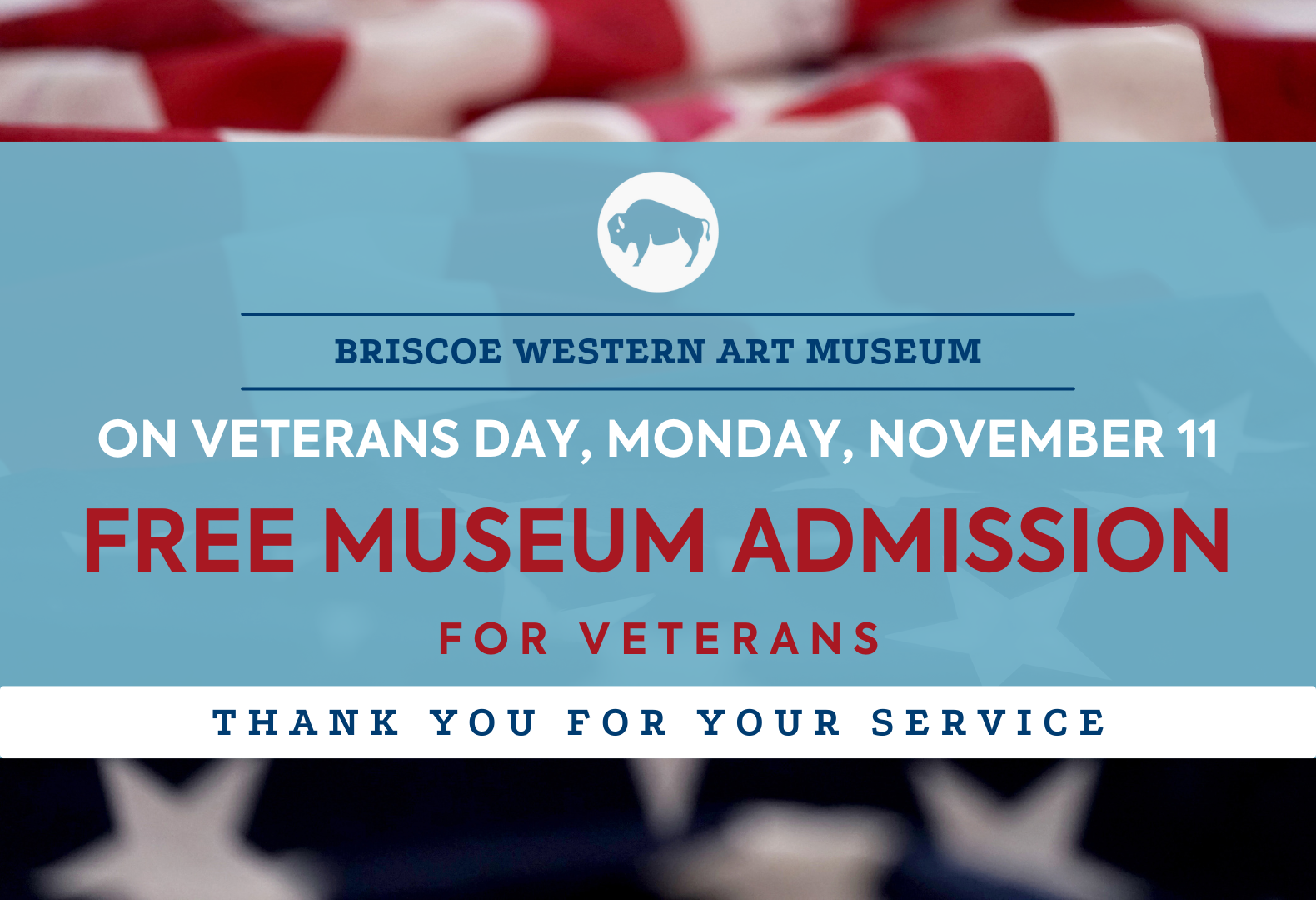Cowboy Mess Camp by Oscar Berninghaus

One of the most intriguing artworks in the Dolph Briscoe, Jr. Gallery is by Taos Society of Artists member Oscar Berninghaus. Painted in 1912, the piece depicts a peaceful moment for a group of cowboys at what is likely the end of a long day. Six cowboys sit contently around a small fire, eating and smoking, while a grizzled cook looks on kindly. The picketed horses are saddled but seem to be at ease. In the background, spread out over a green plain, cattle are grazing contentedly. The scene has a really domestic feel to it because the wagon generally contained the few homey comforts that cowboys experienced on the trail. The evening after the meal was eaten usually provided the best opportunity for conversation and bonding.
The former cowboy and author Andy Adams described scenes similar to that depicted in Berninhaus’ painting. He reminisced about an evening when a group of cowboys sat peacefully, discussing their lives, travels, and lost loves while they played cards.
We paid little attention to wind or weather, this was an ideal night, and we were laggard in seeking our blankets. Yarn followed yarn; for nearly every one of us, either from observation or from practical experience, had a slight acquaintance with the great mastering passion. But the poetical had not been developed in us to an appreciative degree, so we discussed the topic under consideration much as we would have done horses or cattle….Finally the game ended. A general yawn went the round of the loungers of the fire.
Andy Adams “Log of a Cowboy”
For young men used to the comforts and conversation of home, a quiet evening around the fire near the chuckwagon provided some stability in the midst of a job that was prone to change quickly.
Oscar Berninghaus (1874–1952), Cowboy Mess Camp, Oil on canvas, Courtesy of the Jack and Valerie Guenther Foundation
BECOME A MEMBER
Help us bring the spirit of the West alive by becoming a Briscoe Partner!
Click here to become a member!
SUPPORT THE MUSEUM
Governor Dolph Briscoe and his wife Janey envisioned a Museum that would preserve the stories and traditions of the American West.




































